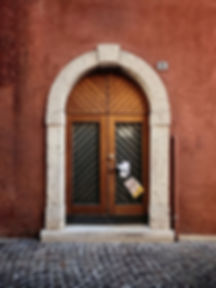*Content warning* I will try to keep the content on this blog appropriate for sharing with high school students, so I want to warn that the post below contains discussion of explicit slurs. I will be ***ing them out in the hopes that this can, if in a small way, lessen the violence and impact of them. However, I should let you know that this post involves a discussion of hate speech that is racist, ableist and sexist.
Yesterday, when I opened Twitter, I was faced with something that happens all too often-- an attack against me for being a feminist. It happens more frequently when I use feminist hashtags. It goes like this: first, you see you've been tagged by an account with one follower (!) and that had the words "f**k feminism" in the username. The photo icon is a woman cowering, shielding herself from a male fist with the words in all caps: "CELEBRATE TOXIC MASCULINITY." Then, you see that your account along with several other accounts of women and especially women of color have been tagged. Some of these accounts have posted questions like "wtf is this?" and then you click (though you know you shouldn't) on the tweet itself. It's pornography-- four images each of a woman of color-- so degrading and revolting I won't even honor it with a description. Perhaps even worse than these is the language, which attacks us using the r-word, n-word, and c-word. The images have phrases like that we are "desperate for attention and to be humiliated by a strong white ****" along with... more and worse things not deserving repetition.

I wish this was unusual. I also wish there was a happy ending to the story. Feminist scholar Sara Ahmed has taught me so much about the demands of happiness, and its cost. But this incident is anticlimactic-- worthy of a shudder or a yawn, a report to Twitter, a blocking.
What kept me thinking about it all day was that I was looking for something good that could possibly come out of it. Without this joy, I was left with the feeling of being beaten. Ultimately I realized that thanks to this awful attack, I basically got free networking to other feminist scholars and thinkers, because everyone who was tagged was pretty amazing! Went back to the tweets, found the women tagged and clicked follow, follow, follow. As messed up as this all was, and as much as I wish it hadn't happened, I'm grateful that now I know about the brilliant work these women are doing.

Also, it was a moment of seeing so clearly how interconnected all of these issues are, and how essential Kimberlé Crenshaw's concept of intersectionality is to actually tackling this network of control. I identify as bi and a woman, which meant some of those words were attacks against my own identity groups, but I didn't need to identify as a person of color or as a person with an intellectual disability to see how all these hatreds were linked. To learn more about intersectionality, click here.

I'm reminded of a woman Latinist who had her own trolls in Renaissance Italy. Laura Cereta (1469-1499) was a humanist who in her short life (she died at the age of 29 of unknown causes, possibly the plague which had claimed her husband years before) penned countless letters, a humorous dialogue, and proto-feminist arguments.
For daring to be a learned woman calling for better education for women, by the age of nineteen she was regularly harassed in the streets. In a letter to Cardinal Ascanio Maria Sforza, she writes that her humilis oratio multorum sibi, conflavit invidiam, qui livoris dentes tanquam gladios in me. ("humble oration stirred up the envy of a number of men, who cruelly sharpened the teeth of their spite against me") (37). As she left, they spat upon her- sputis non sunt veriti dedecorare me ("These men did not hesitate to dishonor me with their spittle"). (39)

A few months before, she had called out her haters and depicted them as animals. Her letter "Bibolo Semproni" ("To Bibulus Sempronus") addressed a hater by giving him a fake name which means "drunkard." She ends her long defense of women with the sentence, īnfāmātissimī quīdam introeuntes; furiōsīs in muliebrem, dignam venerātiōne Rempūblicam infestius mordāciusque dēlātrant. ("Certain insane and infamous men bark and bare their teeth in vicious wrath at the republic of women, so worthy of veneration"). (80) You can read more of Cereta's incredible defenses of women translated by Diana Robin in the English translation of her works here.

But Cereta was not alone in turning the dehumanization of women on its head by depicting a man as a savage beast. In a myth from Homer's Odyssey, the sorceress Circe was said to have transformed men into pigs. They seem clearly to be the victims of this story, which prompted modern feminist retellings like Madeline Miller's brilliant novel Circe and the poem "Circe's Power" by Louise Glück. In these versions, Circe turns them into pigs in self-defense or, most damningly, because they already were pigs. "Some people are pigs; I make them/ Look like pigs," Glück's Circe explains.
We may not have magic spells handy, but there are ways we can "make them look like pigs--" by seeing even in the most violent and hateful tweet the potential for positive intersectional feminist growth, and by connecting with those attacked and strengthening our bonds.
Please show support by following the Twitter accounts which were the targets of this attack:
Cereta, Laura. Letters of a Quattrocento Italian Humanist, Trans. Diana Robin. Chicago: Chicago University Press, 1997.


